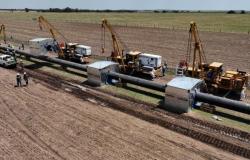A study carried out by NASA warns that some areas of the planet could become uninhabitable by the year 2050 due to global warming. The report, based on satellite data, warns about the increased temperatures and humidity, which could make human life impossible in certain regions.
The wet bulb index, used by experts from the US space agency, allows areas at risk to be identified. It is considered that a A temperature higher than 35 °C for six consecutive hours is lethal, since the human body loses the ability to regulate its internal temperature.
What will be the 5 uninhabitable places on our planet from 2050
According to the study, South Asian nations such as Pakistan could be some of the affected regions. In the last 15 years, some subtropical areas have already exceeded the critical wet bulb index threshold, suggesting that the phenomenon could intensify and expand in the future.
In addition, Countries located in the Persian Gulf could face extreme conditions. High temperatures and humidity levels could make this region uninhabitable for humans.
Red Sea coastal areas also at risk due to global warming. The increase in temperatures in this zone could cause the wet bulb index to exceed the tolerable limit for human life.
By 2070, certain regions of Brazil could also face uninhabitable conditions due to global warming. Temperatures and humidity are expected to reach dangerous levels in these areas.
Eastern China is another region at risk according to study projections. This area could experience rates of wet bulb above 35 °C, putting the health and lives of its inhabitants at risk. Additionally, some regions of the United States could face significant changes in the coming decades.
NASA scientists point out the importance of taking urgent measures to mitigate global warming and prevent these projections from becoming a reality. Reducing greenhouse gas emissions is essential to protect these regions and ensure livability for future generations.
Why the end of the world can be seen in 2045
The European Organization for Nuclear Research (CERN) announced that the year 2045 will see the end of the universe live. This will be possible thanks to the Future Circular Collider (FCC)a machine being built in Geneva, Switzerland.
The FCC will be three times larger than the Large Hadron Collider and will allow scientists to study particles in greater detail and precision. CERN’s main goal is to understand the smallest particles that make up our universe and the forces that govern them.
With the discovery of the Higgs boson 12 years ago, a particle crucial to understanding the functioning of other particles, CERN now seeks to explore cosmic mysteries and simulate the possible end of the cosmos.
The FCC will carry out collisions between subatomic particles to recreate what the end of the universe was like and evaluate whether the conditions for this to occur are closer than imagined. It is expected that The new machine will be operational in the year 2045although the investigations will last several decades: it is estimated that until 2070.
The project will begin with the construction of the Future Circular Collider, which is scheduled for 2030 and will take at least 15 years. According to CERN forecasts, the FCC will cost 20 billion euros and will be three times the size of the Large Hadron Collider.
According to what was announced, It will be capable of producing no less than 40 million collisions per second and the amount of information it will generate will be so enormous that it will be necessary to develop a system that is capable of analyzing the data in real time. and make a decision regarding the collision that has just occurred.






